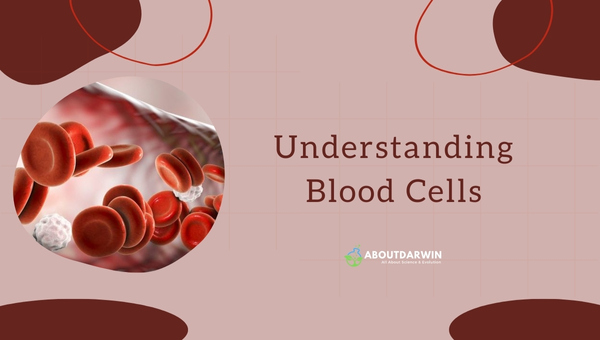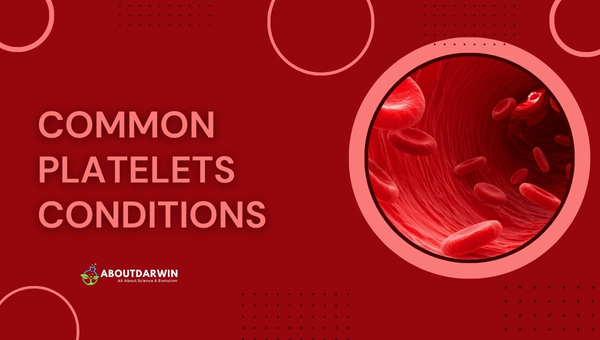Physical Address
304 North Cardinal St.
Dorchester Center, MA 02124
Diving into the journey of our life-sustaining fluid, blood cells are fascinating microscopic saviors ensuring our survival. From fighting off invaders to carrying precious oxygen, these tiny warriors work tirelessly within us.
Ever wondered what powers your every breath or battles infections without your command? Get ready to embark on an intriguing exploration of the types and functions of blood cells in our body!
Blood operates as a critical transportation system in our body, with various types of cells playing unique and vital roles. Red Blood Cells (RBCs), or erythrocytes, are the champions of oxygen transport, delivering life-giving oxygen from the lungs to tissues all over the body and carrying back carbon dioxide for removal.
White blood cells (WBCs), also known as leukocytes, are the defenders—constantly patrolling for pathogens and protecting against disease by engulfing foreign particles and initiating immune responses. Lastly, platelets—small cell fragments—are crucial for clotting processes that prevent excessive bleeding when injuries occur.
Contents
Now, when we talk about blood cells, it’s important to understand just how significant they are. You’ve probably heard the saying, “Blood is life.” That couldn’t be more accurate!
For starters, blood cells are like busy little employees of a gigantic company; each has distinct roles to fulfill. They’re continuously produced in our bone marrow and released into our bloodstream, where they help transport oxygen and nutrients throughout the body.

Each type of these cells has particular lifesaving functions – from red blood cells dashing around loaded with oxygen to feed your tissues or white blood cells standing guard and fighting off infections.
Without these hard-working little soldiers in our system, we would not be able to survive. They are essentially the pillars that support our immune system and overall bodily function. Understanding each of their roles can enrich us with the knowledge of how our bodies work tirelessly behind the scenes on an intricate microscopic level.
In fact, scientists’ understanding of these crucial elements even helps in designing treatments for various health conditions, including anemia, infections, and blood disorders – another testament to “knowledge is power,” don’t you think?
So let’s dive deeper into this world of ‘cellular superheroes’ that make sure we’re alive and kicking every day!
Also Read: Haemolysis in Streptococci: Types and Health Impact
When we talk about blood cells, we’re usually referring to three primary types: red blood cells or erythrocytes, white blood cells or leukocytes, and platelets or thrombocytes. Each of these cell types has a unique structure life cycle and performs specific duties. So, let’s pull back the curtain on these little wonders of our body machinery!
Let’s start with what might be the most famous type – red blood cells (RBCs), or as the scientists like to call them, ‘erythrocytes.’ They are so named because they give our blood its characteristic red color.
Next up, we have white blood cells (WBCs), which, unlike their red cousins, aren’t just one type but come in five different varieties.
Last but certainly not least are platelets or thrombocytes. Arguably, these aren’t even complete cells at all – more like fragments of massive giant cells called megakaryocytes in our bone marrow.
Despite being mere cell pieces, they play a critical role when we have injuries. Platelets rush to the injury site and clump together to form a clot that prevents further blood loss – think of them as our body’s quick-response paramedics.
Expanding our understanding, let’s look more closely at the functions each type of blood cell performs. It’s a fascinating journey tracing the ‘cellular dynamics’ happening inside our bodies!
The primary role played by our red blood cells is as oxygen couriers. It’s simple yet critical: they pick up oxygen from your lungs and transport it to every other part of your body. Their secret weapon? Hemoglobin – a protein that loves hanging out with oxygen. RBCs are packed full of hemoglobin that grabs the oxygen as it passes through the lungs.
And their unique biconcave shape maximizes surface area for efficient gas exchange – they’re like tailor-made, flexible delivery trucks carrying vital supplies around our bodies!
White cells, on their end, act as guardians against diseases and infections. They form a formidable army that ensures our body is ready to attack any foreign invaders. These defense champions are divided into different types that each take on roles in battling various infections – think bacteria, viruses, parasites, etc.
Some provide rapid responses to immediate threats (Neutrophils), while others ensure long-term protection by ‘remembering’ past enemies (Lymphocytes). And remember, if you’ve ever had an allergic reaction or vaccination, it was these white cell warriors standing guard for you!
Now let’s turn focus onto platelets – these tiny fragments rush to an injury site and start sticking together. This forms a clot acting like a plug or dam that stops further bleeding. But wait! There’s more! Not only do they form the core of clot formation but also release chemical signals attracting even more players to repair the injury site – truly embodying their status as quick response teams in case of injuries.
Each type has its role vital for survival, but together? They function like a symphony, each playing their part to maintain our health – it’s a beautiful biological dance performed inside us every single moment!
Also Read: Distinguishing between Anthrax Bacilli and Anthracoid Bacilli
Knowing the crucial roles each type of blood cell plays, it’s no surprise that things can go south when any of these cells do not function properly. This imbalance often results in what we recognize as blood cell disorders.
Perhaps the most widespread disorder associated with red blood cells is anemia – a condition where you either have fewer RBCs than normal or less hemoglobin in your RBCs. This means your tissues won’t get enough oxygen, which leads to fatigue, weakness, and general malaise.
There are several types of anemia, including iron deficiency anemia (the most common type), sickle-cell anemia (a genetic disorder causing misshapen RBCs), and others. Diagnosis typically relies on blood tests, and treatment ranges from dietary adjustments to medication or even transfusions in severe cases.
White cell disorders include conditions like Leukemia – a cancer of white blood cells – where bone marrow produces too many white cells. These excesses can crowd out the healthy cells, leading to serious problems.
Another example is Lymphoma, which specifically targets lymphocytes, causing similar issues. In addition, HIV/AIDS directly attacks CD4 T-cells (a type of lymphocyte), vulnerabilities in our bodies’ defenses against infections.
These conditions come with varying symptoms such as fever or chills, persistent fatigue, and swelling in lymph nodes, among others, making diagnosis partly dependent on recognizing these signs early on, along with specific medical testing procedures.

When it comes to platelets’ dysfunctioning or imbalances, Thrombocytopenia – a condition characterized by low platelet count- typically leads to excessive bleeding & bruising since clots aren’t formed efficiently.
There are three types of blood cells; red blood cells are the most plentiful. In fact, a healthy adult has about 35 trillion of them.
Blood cells are made in the bone marrow. The bone marrow is the soft, spongy material in the center of the bones. It produces about 95% of the body’s blood cells.
A single unit of packed red blood cells is roughly 350 mL and contains about 250 mg of iron.
An RBC count is measured in millions per cubic millimeter (million/mm3). Normal values may vary slightly among different labs.
The world of blood cells is, without question, incredibly vast and complex. Encompassing red blood cells that hustle to deliver oxygen where it’s needed, white blood cells guarding our bodies against infections, and platelets playing their role as an efficient clotting system – they all come together to form the amazing symphony that keeps us alive and healthy.
Understanding these types of cells, their unique roles, and their functions not only makes us appreciate our bodies more but could also be beneficial in catching early signs of potential diseases or health issues. Like many things when it comes to our health, proactive understanding always wins over reactive actions.